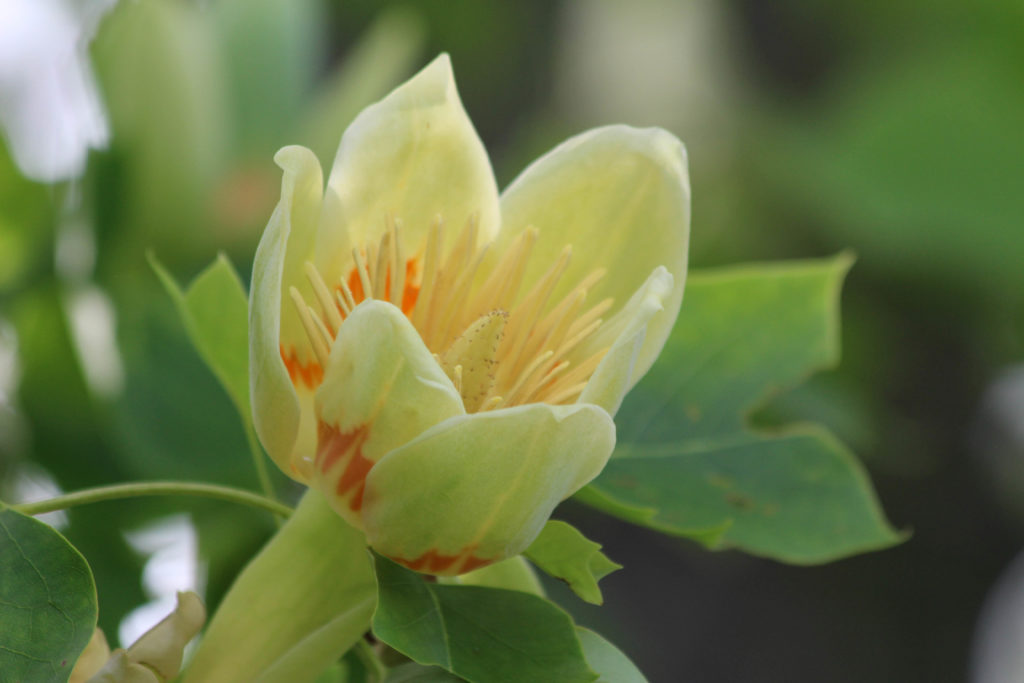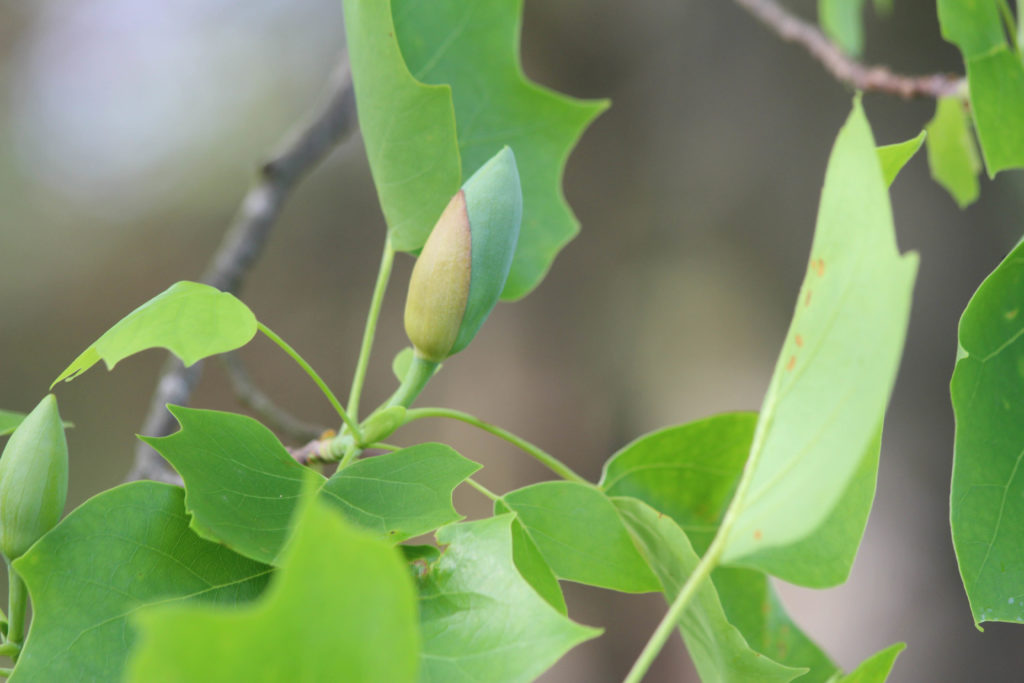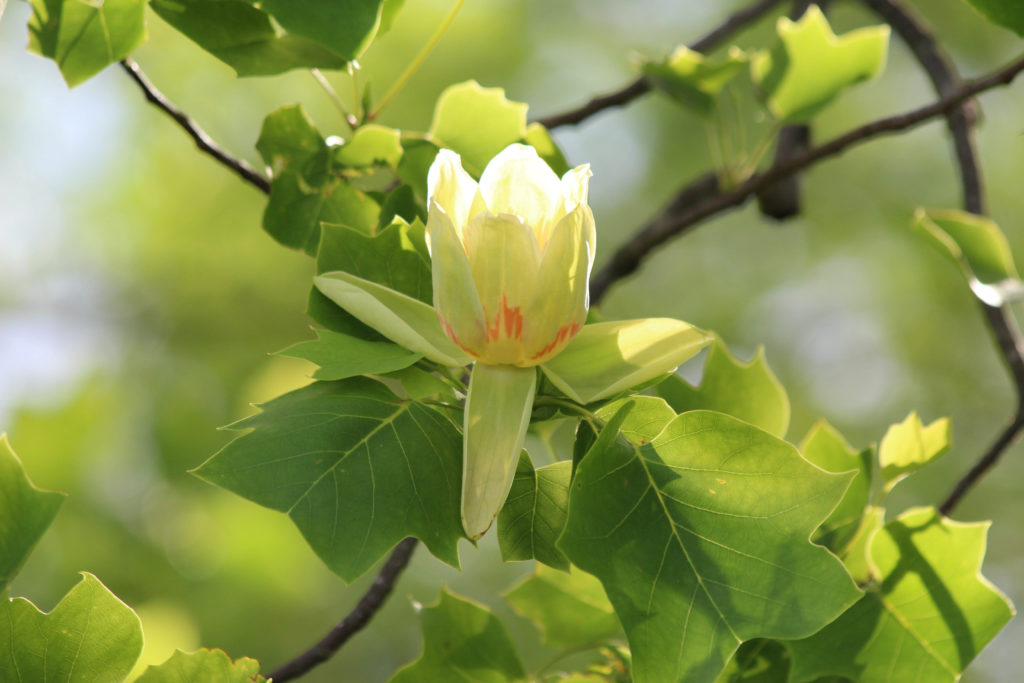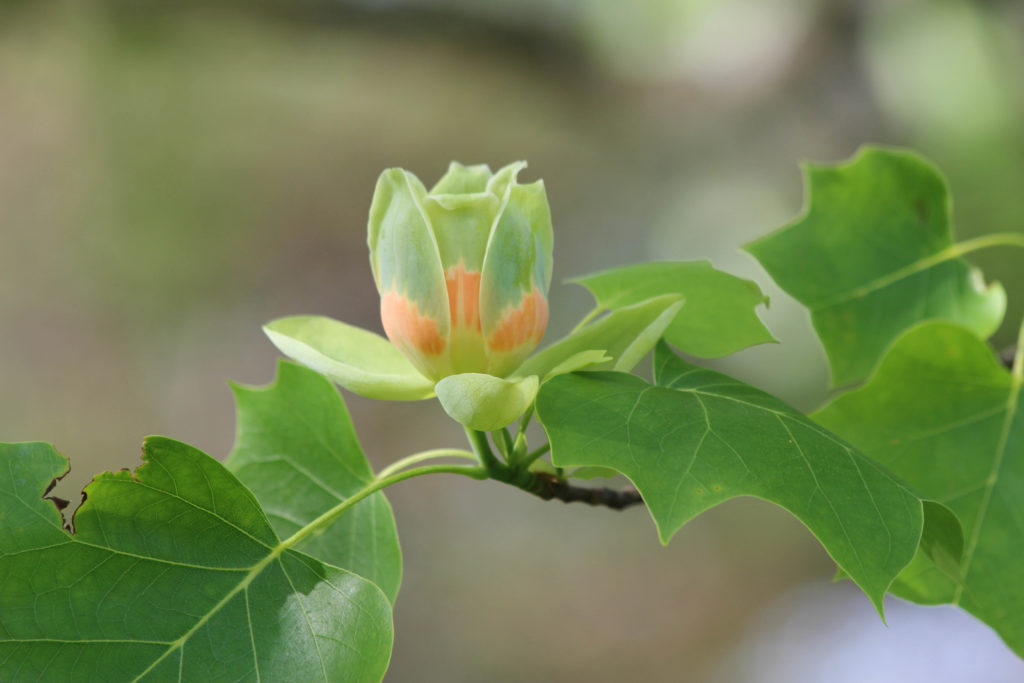
What’s in Bloom | Tulip-poplar
May 17, 2021
- Tulip-poplar (Liriodendron tulipifera) is among the tallest deciduous hardwood trees in North America, between 60-150 feet tall.
- Native to the eastern USA and Canada.
- Common name was inspired by yellow-orange tulip-like flowers, blooming May-June. However, it belongs to the family magnoliacea.
- Has a long history of use by people, primarily for its wood.
- Provides an abundant food source for native pollinators
Tulip-poplar (Liriodendron tulipifera), also known as tulip-tree or yellow poplar, is one of the tallest eastern hardwoods. Rising 60-150 feet into the air, its trunk is long and straight, up to 6 feet in diameter, and generally lacks lower branching. It has a conical or pyramidal crown, with a 30-40 foot spread. In the spring, furled yellow leaves appear, which mature to be 3-8 inches wide, smooth, waxy, and star-shaped. The leaves become a beautiful golden-yellow color in the fall.
Contrary to its name, tulip-poplar is in the Magnoliacea family, more closely related to magnolia trees than either tulip or poplar. The source of its common name derives from its beautiful, tulip-like flowers which emerge in May-June. The flowers are cup-shaped and yellow-green, with an orange band at the base of each petal. Despite their showiness, flowers can be easy to miss due to their camouflage among the leaves on the tulip-poplar’s high branches. Once the leaves have fallen, brown cone-shaped seed heads remain, each containing numerous samaras (winged seeds). Tulip-poplar thrives in well-drained, rich, slightly acidic soil, and prefers full sun; however, it is highly adaptable and is frequently cultivated as a shade or lawn tree.
Tulip-poplar has a long history of use by humans. Indigenous peoples of eastern North America used its wood to create dugout canoes. European colonizers used it to build log cabins, and were so impressed with the tree that they sent samples back to Europe, leading it to become one of the most popular American trees cultivated today in France and England. Today, tulip-poplar is heavily logged and used for everything from furniture to paper pulp.
Benefits to Biodiversity | The tulip-poplar provides a source of abundant nectar to pollinators including species of bee, beetle, and hummingbird.
Sources: https://www.uky.edu/hort/Tulip-Poplar ; https://www.wildflower.org/plants/result.php?id_plant=LITU ; https://www.missouribotanicalgarden.org/PlantFinder/PlantFinderDetails.aspx?taxonid=282514&isprofile=1&basic=Liriodendron%20tulipifera


